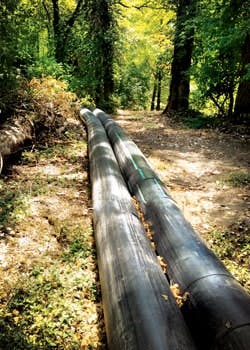About the author: Jim Kalishman is chief information officer for SAK Construction. Kalishman can be reached at [email protected] or 636.385.1040.
In St. Louis there is an old adage: the bigger the project, the bigger the challenge. In sewer rehabilitation, that saying certainly rings true. Due to the sheer scope of a large project, a contractor often will face challenges and unforeseen problems not encountered on a small job. Often, large projects include unique tasks that also come with bigger price tags, which can increase the risk for the contractor willing to take on the challenge. Equally important: As the front line “face” of its municipal customer, a contractor must capably address issues that not only have the potential to affect cost, but also may disaffect the public.
Moving In
This was the scenario that O’Fallon, Mo.-based SAK Construction faced in completing a 101,423-ln-ft infrastructure repair for the St. Louis Metropolitan Sewer District (MSD) utilizing cured-in-place pipe. The $5,389,366 contract came with a variety of problematic installation issues, in particular a 5,275-ln-ft bypass of 27-by-42-in. sewer that originated on one of the oldest private golf courses in metropolitan St. Louis, Old Warson Country Club, and terminated in a residential neighborhood in one of the region’s municipalities, Ladue. It was a job that would take several months to complete.
“Our big concern was wearing out our welcome,” said Tim Bussen, SAK project manager. “Generally, homeowners see us in the morning when they leave for work, and we’re gone for good before they get back home for dinner.”
This project, however, involved large-diameter installations that would take place over several days and required SAK workers to leave equipment set up during the process. Further, all access points to the sewers being rehabilitated were located in backyards or on the golf course, which made working around the clock (and around the public) even more difficult.
Community Relations
In collaboration with MSD, SAK made the decision to tackle the “persistent stay” issue head on by communicating directly with the community affected by the work. The project management team felt that preparing the public and setting realistic expectations would provide the understanding needed to give its installation crews a “mulligan” if necessary during the process. After sending a letter advising homeowners of the project before the start of work, Bussen and members of his team went door to door to personally answer questions and allay the concerns of residents. They also shared the steps SAK would be taking “above and beyond the norm” to hasten its departure (around-the-clock workdays) and to minimize disturbance (silenced pumps to cut ambient noise at night).
When the work was complete, SAK made an effort to restore all disturbed areas to their original condition, which pleased the residents.
“We appreciated and valued the cooperation it took on the part of the homeowners and wanted to make sure that their grounds looked as good at the end of our stay as they did the day we arrived,” Bussen said.
The extra planning and communication paid off. MSD officials reported receiving no complaints during the multi-month project.
“SAK personnel were very professional throughout the project and their constant, open communication with us made a difficult situation bearable,” said Tim Bacich, a resident whose backyard was used by SAK as a base camp during the bypass phase. “We really appreciated their efforts to keep the interference to the surrounding area and residents to a minimum.”
Likewise, MSD appreciated the efforts SAK made to represent the agency well in the community.
“SAK really understood what it would take to manage this high-profile project, not only from a project performance point of view, but also from a community relations standpoint,” said Steve Welnick, a division inspector for MSD. “We were very pleased that they were able to leave the jobsite literally undisturbed. That wasn’t an easy task given the larger diameters and demanding locations where they were required to work. We’re very happy with the outcome.”
A second assignment that SAK had in the same neighborhood posed similar challenges, but the homeowners were familiar with the crews based on the success of the first project, and they did not express any disdain for the additional work.
Download: Here
